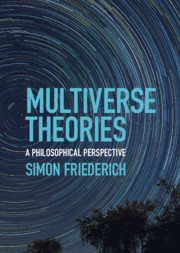Book contents
- Frontmatter
- Dedication
- Contents
- Preface
- Part I Setting the Stage
- Part II Fine-Tuning for Life and the Multiverse
- Part III Testing Multiverse Theories
- 7 Testing Multiverse Theories: Theoretical Approach
- 8 Testing Multiverse Theories: Approaching Practice
- 9 Puzzles of Self-Locating Belief
- Part IV Wider Still andWilder
- References
- Author Index
- Subject Index
8 - Testing Multiverse Theories: Approaching Practice
from Part III - Testing Multiverse Theories
Published online by Cambridge University Press: 07 January 2021
- Frontmatter
- Dedication
- Contents
- Preface
- Part I Setting the Stage
- Part II Fine-Tuning for Life and the Multiverse
- Part III Testing Multiverse Theories
- 7 Testing Multiverse Theories: Theoretical Approach
- 8 Testing Multiverse Theories: Approaching Practice
- 9 Puzzles of Self-Locating Belief
- Part IV Wider Still andWilder
- References
- Author Index
- Subject Index
Summary
Applying the BIC in practice is far from straightforward and fraught with difficulties because it requires the regularization of space-time infinities by implementing some cosmic “measure.” Furthermore, a suitable physical quantity must be chosen as proxy for the number of reference class observers in some given space-time region. Unfortunately, the choices made in this procedure are prone to being exploited – often unintentionally – by the researchers as so-called researcher degrees of freedom (a term from the social science literature) to yield those results that would best conform to their theoretical preferences. In the light of this difficulty, the prospects for obtaining compelling evidence in favor of any specific multiverse theory by testing whether our observations are those that typical multiverse inhabitants would make do look bad. As it turns out, the multiverse theories that have the best chances of being successfully tested empirically are those that do not behave as typical multiverse theories in important respects – i.e., those multiverse theories according to which all universes in the multiverse are similar or identical in a significant number of ways.
Keywords
- Type
- Chapter
- Information
- Multiverse TheoriesA Philosophical Perspective, pp. 114 - 131Publisher: Cambridge University PressPrint publication year: 2021

